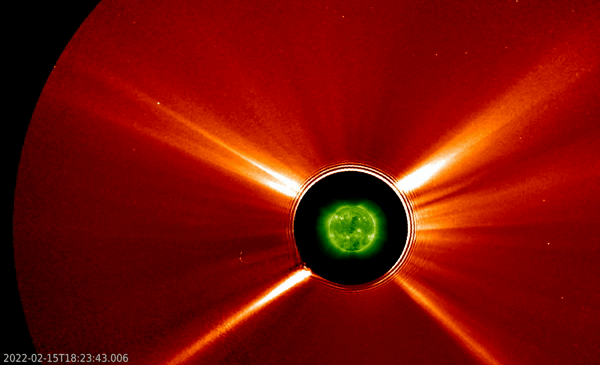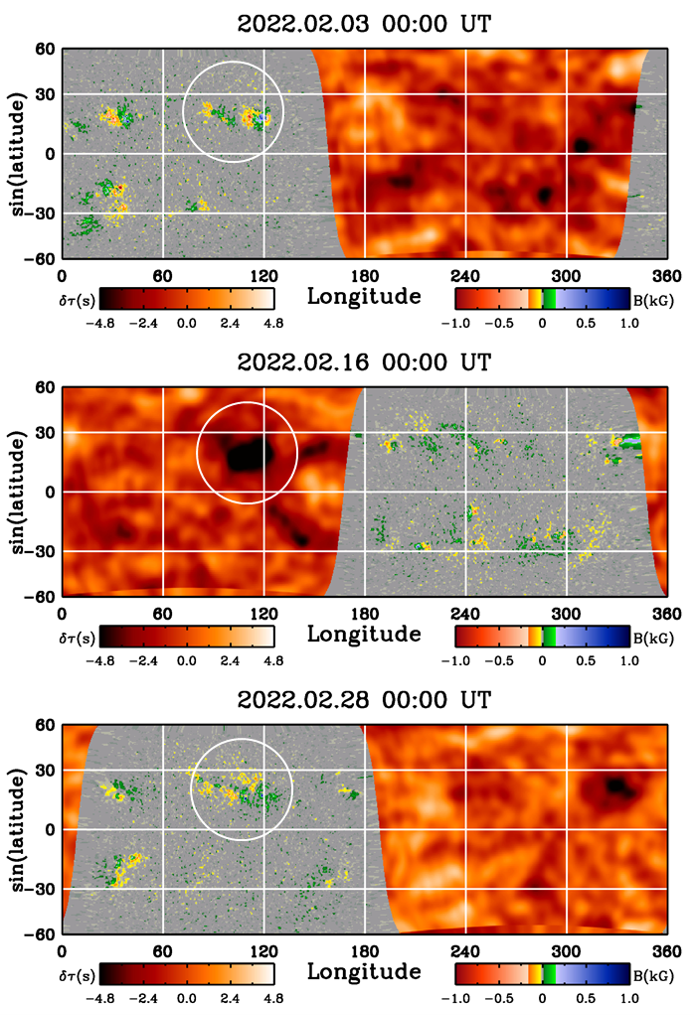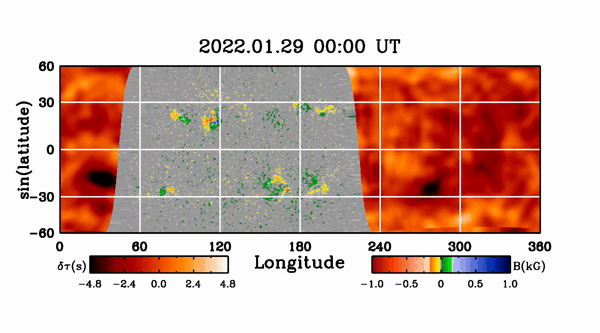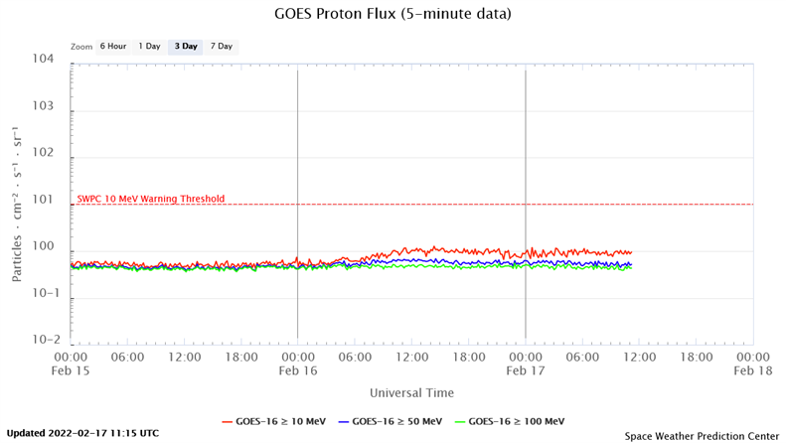On 15 February 2022, a spectacular eruption took place on the Sun's far side. The wide field-of-view of Solar Orbiter's "Full Sun Imager" (FSI) currently allows for a lot of viewing margin around the solar disc, and so it was able to track the stunning eruption out to about 3.5 million kilometers, equivalent to five times the radius of the Sun. This was the largest solar prominence eruption ever observed in a single image together with the full solar disc. The observations were extensively covered in the ESA press release as well as in this STCE News item.

The imagery above combines extreme ultraviolet (EUV) pictures of the Sun with white light coronagraphic images as obtained by instruments on board the STEREO-A spacecraft (EUVI 195, COR2) which is currently trailing the Earth by about 34 degrees. Clearly, the eruption took place on the Sun's far side even from the STEREO-A's point of view. With no other spacecraft being able to image the blast site itself, it seems we can't say much on the source of the eruption. Or can we?
Enters helioseismology. This branch of solar research is very similar to seismology on Earth, where by studying the waves induced by earthquakes, scientists get an idea on the Earth's interior. Indeed, by carefully "listening" to the up and down movements all over the solar surface, helioseismologists get a pretty good idea on the specifics of the solar interior. Moreover, by studying the related acoustic waves that are travelling through the solar interior, they can virtually "see" any rather big, active region that may be present on the far side. Such maps are available from ground-based networks (NSO/GONG - https://farside.nso.edu/) and space-based observations (JSOC/SDO/HMI - http://jsoc.stanford.edu/data/timed/).


The triptych above shows full Sun images (between latitudes -60° and +60°) stitching together HMI magnetograms (grayish ; earth-facing solar hemisphere) and helioseismic observations (orangish ; far side) as available at JSOC/SDO/HMI. Concentrations of magnetic fields (active regions) can be seen in the magnetograms as blue-greenish and red-yellowish patches, whereas in the helioseismic maps these concentrations are represented by dark patches. The compilation shows a synoptic map of the Sun on 16 February (00UT - middle image) and about half a solar rotation before (03 February - top) and after (28 February - bottom) the eruption.The clip of these maps covers most of the month of February.
At the time of the 15 February eruption, a dark patch near latitude +25° and longitude 120° (as annotated by the white circle) is clearly distinguishable in the helioseismic map, corresponding with the location of old active region NOAA 2936 (top image) and NOAA 2954 (bottom image). Note this is the same active region, it just got a different NOAA number. This patch is rather large, indicative that the map cannot distinguish between the nearby active regions resp. NOAA 2938 and NOAA 2955, and thus takes them altogether. It seems fairly straightforward to conclude that NOAA 2936 was the source of the eruption. This sunspot group showed episodes of important flux emergence during its previous transit over the solar disc, as outlined in this STCE News item. Also, some of the eruptions in this region were quite complex as can be seen in the related clips. For the 15 February event, the helioseismic images do not reveal if the eruption was solely rooted in NOAA 2936, or if it was due to interactions with nearby active regions such as NOAA 2938, or from newly emerging magnetic flux. At the time of the eruption, NOAA 2936 was located about 50° to 60° behind the east limb as seen from Earth, and thus about 15° to 25° behind the east limb as seen from STEREO-A. By studying various features in the coronal mass ejection (CME) and triangulating their positions, researchers are now trying to determine how much these features were deflected from the source region.

As STEREO-A will be approaching the Earth in the coming years, its view on the Sun's far side will diminish even further, leaving helioseismic imagery as the sole systematic data source for what's happening on the hidden solar half (see also this STCE News item. Fortunately, EUV images from Solar Orbiter may occasionally help if -from Earth's perspective- the spacecraft is at the right position in its orbit around the Sun.
Meanwhile, researchers are still in ecstasy and continue analyzing the various and amazing observations made during the 15 February eruption. For example, despite its location on the Sun's far side, a coronal wave (see this News item for more info) was observed in AIA 193 images made by the SDO satellite, meaning that this feature was visible from the Earth's vantage point. And GOES-16 recorded a mild enhancement in the greater than 10 MeV proton flux, again despite the far-side location of the source region which would normally result in a very poor magnetic connection between the Sun and Earth for this kind of events. These happenings are very rare, but they have happened in the past. Notorious examples are the eruptions of 1 September 2014 and 23 July 2012. These observations suggest that the associated flare might have been quite strong too. Based on preliminary values for the speed of the CME, a value for the flare's soft x-rays peak in the X10-X20 range is certainly possible. Nonetheless, this result should be taken with some caution, in view of the uncertainty in the CME speeds and the uncertainties in the equations used (Salas-Matamoros and Klein 2015). It would have been quite a spectacle if we had had a solar satellite observing the flaring location on the Sun's far side that day.





